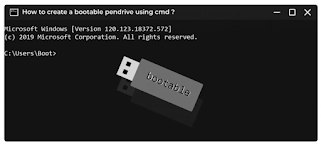https://files.fm/u/h3mrhnp5dg
Everything about WMAD you can get here.
Mobile applicaction:
It is a software application developed specifically for use of on small,wireless company such as smartphones and tablets rather than desktop or laptop compueters.
Mobile applicaction Development:
It is the process of making software for smartphones and digital assistants , most commonly for android and ios.
Mobile applicaction Distribution Plateform:
1) App store(ios)
What is android?
Android is open source and linux based mobile operating system particulary designed for small,wireless devices such as smartphone and tablet rather than Laptop and computer.
Feature & Description of Android operating system:
1
Beautiful UI
Android OS basic screen provides a beautiful and intuitive user interface.
2
Connectivity
GSM/EDGE, IDEN, CDMA, EV-DO, UMTS, Bluetooth, Wi-Fi, LTE, NFC and WiMAX.
3
Storage
SQLite, a lightweight relational database, is used for data storage purposes.
4
Media support
H.263, H.264, MPEG-4 SP, AMR, AMR-WB, AAC, HE-AAC, AAC 5.1, MP3, MIDI, Ogg Vorbis, WAV, JPEG, PNG, GIF, and BMP.
5
Messaging
SMS and MMS
6
Web browser
Based on the open-source WebKit layout engine, coupled with Chrome's V8 JavaScript engine supporting HTML5 and CSS3.
7
Multi-touch
Android has native support for multi-touch which was initially made available in handsets such as the HTC Hero.
8
Multi-tasking
User can jump from one task to another and same time various application can run simultaneously.
9
Resizable widgets
Widgets are resizable, so users can expand them to show more content or shrink them to save space.
10
Multi-Language
Supports single direction and bi-directional text.
11
GCM
Google Cloud Messaging (GCM) is a service that lets developers send short message data to their users on Android devices, without needing a proprietary sync solution.
12
Wi-Fi Direct
A technology that lets apps discover and pair directly, over a high-bandwidth peer-to-peer connection.
13
Android Beam
A popular NFC-based technology that lets users instantly share, just by touching two NFC-enabled phones together.
Need of Mobile operating system
Download your website code here
This website is copyrighted by its owner. You must try to create a website of your own using this template. Don't forget to change the website's appearance ( hOw it look) along with the images and text used on the website.
INSTALLATION OF LINUX OPERATING SYSTEM:
THEORY: Linux O.S
Linux is a community of open-source Unix like operating systems that are based on the Linux Kernel. It was initially released by Linus Torvalds on September 17, 1991. It is a free and open-source operating system and the source code can be modified and distributed to anyone commercially or noncommercially under the GNU General Public License.
Method:
Step1:Insert a bootable Linux USB drive.
Step2:Click the start menu. ...
Step3:Then hold down the SHIFT key while Step4:clicking Restart. ...
Step5:Then select Use a Device.
Step6:Find your device in the list. ...
Step7:Your computer will now boot Linux. ...
Step8:Select Install Linux. ...
Step9:Go through the installation process.
conclusion:
In this lab we learn to install linux operating system in computer.
Watch video to learn.
Managing, Partitioning and Naming harddrive without formatting:
Theory: HardDrive
A hard disk drive, hard disk, hard drive, or fixed disk, is an electro-mechanical data storage device that stores and retrieves digital data using magnetic storage with one or more rigid rapidly rotating platters coated with magnetic material.
Method for managing, Partitioning:
Step1:Right click on This Pc icon on your Desktop.
Step2:Click on Manage option.
Step3:Then click on "Disk Management" option.
Step4:Right click on C drive.
Step5:Then click on Shrink Volume option.
Step6: Select the size in MB and click on Next for multiple time.
Step7:Click on finish button and you are done.
Method for Naming Hard disk:
Step1:Click on the This PC on your Desktop.
Step2:Right click on the drive you want to rename.
Step3:Click on Rename option.
Step4:Write name and click on Enter button and you are done.
CONCLUSION:
In this lab we learn to manage ,partition and rename Harddrive without formatting.
How to create Bootable
Pendrive using PowerISO Software.
Requirement: Computer System,PowerISO Software,windows image file(O.S file).
Theory: PowerISO:
PowerISO is a powerful disc image file processing tool, which allows you to manipulate image files in lots of ways, such as open, extract, burn, create, edit, compress, encrypt, split and convert image files, and mount these files with internal virtual drive. It supports all popular CD, DVD, and Blu-ray disc image files.
PENDRIVE:
A USB flash drive -- also known as a USB stick, USB thumb drive or pen drive -- is a plug-and-play portable storage device that uses flash memory and is lightweight enough to attach to a keychain. A USB flash drive can be used in place of a compact disc.
BOTABLE PENDRIVE:
Bootable USB is a disk that is used to boot up a system for the installation of an Operating System. A USB can be made bootable using a command-line only for systems that have Windows(7/8/8.1/10) operating system. Linux Distributions can’t be used to create a bootable USB device without using third-party tools. Early versions of Windows i.e. before Windows 7, can’t be used for making a USB bootable.
PROCESS:
STEP 1:Insert Pendrive into your pc.
STEP 2:Open Power ISO Software.
STEP 3:Click on add button Then click on add file and folders.
STEP 4:Clicks on Tools menu.
STEP 5:Then select on create Bootable USB drive.
STEP 6:Select windows iso image file(o.s file).
STEP 7:Click on start Button.
CONCLUSION:
In thi lab we learn to create Bootable USB Drive using PowerISO Software.
Watch video to learn more..



